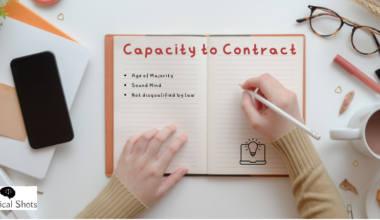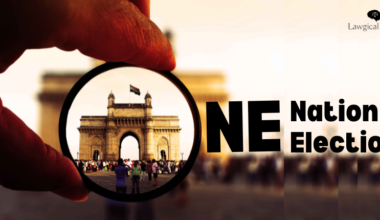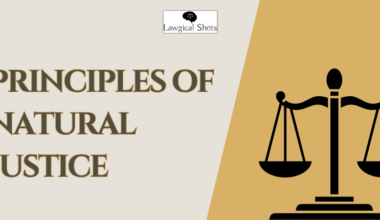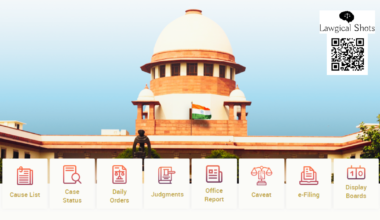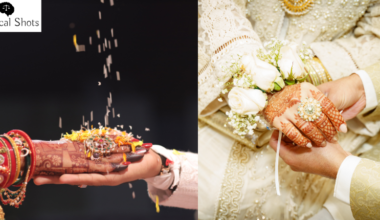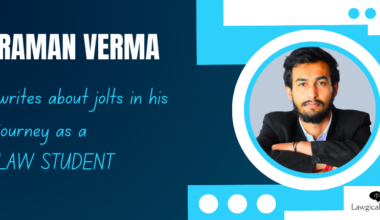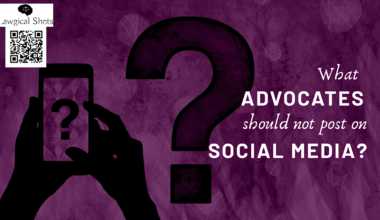Call recording is securing the telephonic conversation to a digital file. It can be done for many reasons, as to check the service calls by the telecaller executive to a customer. Evidentiary value of call recordings has been a matter of debate for years. In India, so far, there is no clarity on the evidentiary value of call-recordings, particularly their admissibility in the Courts. Different High Courts have different stands on this point. In the era of information technology and increasing cyber crimes, where fraudsters use different mobile numbers to commit financial frauds, it has become important that call recordings should necessarily be relied upon. This article highlights the importance of call recordings during trials and associated challenges, with a way out.
In RM Malkani v. State of Maharashtra (1972), the Supreme Court held that the electronically recorded conversation is admissible in evidence. It further required that such recording should be relevant to the issue, voice of the callers should be identified, and it should be proved that it is real and authentic. So, this case put some condition on the authenticity of the recorded calls before the court admit it. Here the possibility of fake recording is posed as a challenge for Courts.
Let’s dive deeper into the realm of law regarding the electronic evidence and associated developments.
Legal landscape for Call recordings in India
Constitution of India
When it comes to the scope of power to make laws around call recordings as an evidence by the Union or State, it falls under Entry 31 of the Union List of Seventh Schedule read with Article 246 of the Constitution of India. Entry 31 enlists the modes of communication. It covers posts and telegraphs, telephones, wireless, broadcasting, and “like forms” of communication. Simple interpretation of like forms of communication can be any communication recognised for the time being. In today’s world, communication can be done through telephone, smartphones, emails, chat messengers, etc. Thus, all modes of communication fall under the power of Union. The Central government can make any laws or decide the fate of communication devices, and channels.
Indian Telegraph Act, 1885
Under Section 5(2) of the Indian Telegraph Act, 1885, the Union and State governments have the authority to record telephone calls. It states that the Government or any officer on behalf of the Government can stop the transmission of a message, to be intercepted/detained/disclosed during a public emergency or in the interest of public safety. Its purpose lies in stopping or preventing crime, and not to felicitate coercion or fraudulent practices. The provision further clarifies that Press messages cannot be intercepted unless their transmission is prohibited because of protecting sovereignty and integrity of India, the security of State, friendly relations with foreign States, public order, preventing incitement to the commission of an offence.
Navigating the transition of Electronic Evidence from Indian Evidence Act, 1872 to Bharatiya Sakshya Adhiniyam, 2023
Earlier the Indian Evidence Act, 1872 was mostly focused on the physical world, since there were no technological advancements at the time of its inception. But later, the new millennium introduced a fresh law on Information Technology which amended the existing evidence law.
The Information Technology Act, 2000 led to the introduction of Section 65B to the Indian Evidence Act, 1872, which facilitated the admission of electronic evidence stored on optical or magnetic media. The provision required a certificate to ensure that the electronic evidence has not been tempered and altered, to be signed by the person producing it before the Court.
It is for the first time that the term “communication device” has been incorporated along with computers in new evidence law, Bharatiya Sakshya Adhiniyam, 2023 through Section 63. But it has not been defined under the BSA.
Smartphones, Call Records and Law of Evidence
Smartphones are communication devices whose features somewhat compete with that of computers for producing different forms of data, including electronic records as evidence. Under Section 2 of the Bharatiya Sakshya Adhiniyam, 2023 a “document” can be any matter expressed, described or recorded and includes electronic and digital record.
Earlier, the Indian Evidence Act, 1872 restricted the oral evidence to the statements of the witnesses before the court, but now under Section 2(e) of the Bharatiya Sakshya Adhiniyam, oral evidence includes statements given electronically. Now, Section 63 of BSA states that this certificate must be signed by the owner of the device and the expert. However, it does not specify or guide about who qualifies as an expert. So far, the Ministry of Electronics and Information Technology specifies fifteen such examiners of electronic evidence.
A recorded call is primary evidence under explanations to Section 57 of the Bharatiya Sakshya Adhiniyam, 2023. Earlier, the certificate under Evidence Act was applicable only to the secondary evidence. Now in BSA, the certificate is admissible for both primary and secondary evidence. As per Section 33 of the BSA, only the relevant portion, which supports the statement given before the court, will be admitted as evidence. Rest of the conversation shall be excluded from consideration by the Court.
Benefits of Call recordings as Evidence
Call recordings, unlike oral statements, can be played and replayed. This way, a statement need not necessarily be disproved unless it is a case of fraud or misinformation. Thus, it saves time and works efficiently for the Courts. In case of parties, smartphones are readily available for recording abusive or private conversations, which may not otherwise be easily and genuinely brought before the Courts. For example, conversation of a wife threatening her husband of lodging false cases against him and his family may not be available in any other form, but a form of evidence that may help the husband’s cause.
In State (NCT of Delhi) v. Navjot Sandhu @ Afsan Guru (2005), the Supreme Court discussed in detail the transcripts of taped telephonic conversation. The link between the terrorists and the real face behind the attacks was confirmed only through those transcripts.
Evidentiary Value of Call Recordings: Justice v. Rights
Imagine you are in the Court. You have your matrimonial family against you. You carry a file of recorded calls to put light on your statement. Suddenly, the opposite counsel says “Your Honour! This recording has a conversation of my client, and no consent was taken before recording it. So, it should not be played as it is an infringement of privacy.” Your face turns pale. Now, you are in the shoe of a litigant. What is more important? Right to privacy or fairness. Why should you not be given the chance to prove your innocence?
Right to privacy is fairly important, but if it takes away the dignity or life of the other, is it still important? It is not more important than anyone’s life. So, the right to fair trial is paramount to secure the life of the defendant. Fair trial means none of the parties is unheard. Denying the opportunity to present evidence before the Court to save yourself should not succeed on the challenge of privacy. Justice does not flourish on privacy, it flourishes on transparency.
In Deepti Kapur v. Kunal Julka (2020), the Delhi High Court recognized call recordings of Couple’s conversation as valid piece of evidence for the specific divorce proceedings. But in Asha Lata Soni v. Durgesh Soni (2023), the Chhattisgarh High Court held that the call recording of husband-wife conversation taken without consent cannot be used as evidence in Court.
Section 136 of the BSA, ensures privacy by saying that no one can be forced/compelled to present any document or electronic record to the Court if he possesses the electronic record, and the owner refuses to produce.
Impact of Deepfake Technology
The emergence of Artificial Intelligence, particularly the Deepfake Technology has led to confusion regarding originality of electronic records, including call recordings. Deepfake Technology is a way of creating false or fake audios, videos, still pictures replicating the personality of a real person, as if they are original. Deepfake can create an audio or video of any deceased person like he or she is alive and talking to the viewers.
This is looking down to the principles of natural justice. It forces the parties to challenge the veracity of the recorded calls. This in turn becomes a challenge for the Courts and eventually delays the decision of the Court. It is not easy to detect the originality of such call recordings, because they require Deepfake detection tools that may be costly. This challenge is not restricted to original or duplicate, it goes even further. It may lead to wrongful conviction as fake recordings can be taken as real; and real can be taken as fake. So, Deepfake poses a challenge for all the stakeholders viz., lawyers, prosecution, police, judges, accused, and victim.
However, Section 66 of the BSA provides for proof of the electronic signature attached to the electronic record. Since call recordings are audio files, using a hash function signatures can be affixed to them. A hash value is a unique numeric value, which means, no two hash values can be identical. This hash value represents the content of the data. This is done through a mathematical function which converts entire text to a digital numerical character which cannot be read by laymen.
Further, if signatures are not secured, then it is essential to prove that this electronic signature is of the subscriber. This provision doesn’t make electronic signature compulsory, but it can be recommended that to ensure authenticity, signatures can be attached to the original file. Hash value of a deepfake file or altered file will not match with the original file. This can be a sound clue that the evidence is tampered.
Recommendations
While we can weigh the evidentiary value of call recordings, and the challenges posed by artificial intelligence, a strong law or judicial precedent is required to ensure the audio files are authentic. Right now, it has been left upon the owner and the experts to take charge of the authenticity of the call recordings. It can be made necessary to affix electronic signatures to ensure originality. It will also help in differentiating an AI created audio file and genuinely recorded audio file from a communication device.
Multi-layer verification can also be a game changer to give effect to the admission of call recordings. It can be in the form of biometrics, password or OTP. While handling call recordings by the law enforcement agency, the chain of custody should be carefully maintained as even a slight mishandling can turn the call recording futile. Special skill training and critical infrastructure must be prepared to handle such sensitive information during investigation and till the case is disposed of.
Conclusion
Nowadays, it is common to use smartphones as communication devices, which provide facility to record calls. When one finds any suspicion, then he/she records the calls so that other caller does not deny his words in future, or to keep a proof of conversation for other purposes, whether formal or casual. The government is allowed to record telephonic conversations, but the debate regarding evidentiary value of call recordings becomes important when private individuals or offices do it. Sometimes, the other person may be coerced to divulge his information under the threat of call recording. Also, people don’t complain of breach of privacy when someone records their calls. This may be because of lack of awareness or being comfortable.
Evidentiary value of call recordings, however holds good, but it should not be used to manipulate the version of the other person. Sometimes when we hear that you are on the recorded call then we become conscious and start divulging the correct state of affairs even when we are talking to fraudsters. So the call recordings should be admitted in the Court on the basis of certain guidelines. Only the veracity of call recordings should not be taken care of, but also the veracity of the version in call recordings. It is important to know if the caller was forced to speak or behave in a particular manner. Whether he/she was comfortable on the phone. It should be investigated if there were any attempts of brainwashing or taking benefits of the derogatory circumstance of the concerned individual.
No one is liable for every statement that they have spoken on the phone. It should be evaluated as per the circumstances, requirements of the case. It is important to counter extortion, breach of trust or other repercussions. There is no water tight formula to ascertain the context in which the statement was made.
The question of Evidentiary Value of Call Recordings has been analysed and discussed by Ms. Priyanka Jain, a Legal Intern at Lawgical Shots. Priyanka is bringing value through legal blogs for our readers.

